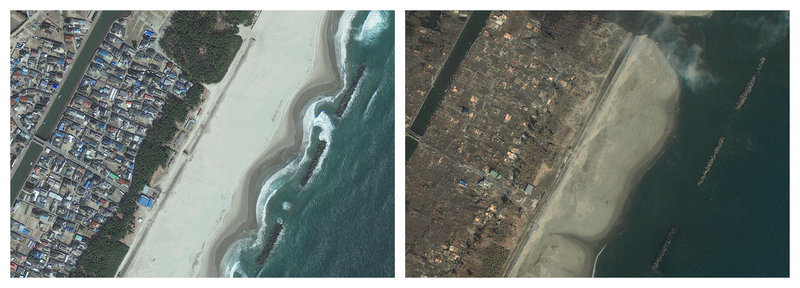LOS ANGELES – Friday’s magnitude-8.9 earthquake in Japan shifted Earth on its axis and shortened the length of a day by a hair. In the future, scientists said, it will provide an unusually precise view of how Earth is deformed during massive earthquakes at sites where one plate is sliding under another, including the U.S. Pacific Northwest.
The unusually rich detail comes from an extensive network of sensors that were placed at sites across Japan after that country’s Kobe earthquake of 1995, a magnitude 6.8 quake that killed more than 6,000 people because its epicenter was near a major city.
“The Japanese have the best seismic information in the world,” Lucy Jones, chief scientist for the Multi-Hazards project at the U.S. Geological Survey, said at a Saturday news conference at the California Institute of Technology in Pasadena. “This is overwhelmingly the best-recorded great earthquake ever.”
Already, slightly more than 36 hours after the quake, data-crunchers had determined that the temblor’s force moved parts of eastern Japan as much as 12 feet closer to North America, scientists said — and that Japan has shifted downward about two feet.
Jones said the USGS had determined that the entire earthquake sequence — including associated foreshocks and aftershocks — had so far included 200 temblors of magnitude 5 or larger, 20 of which occurred before the big quake hit. She said the aftershocks were continuing at a rapid pace and decreasing in frequency although not in magnitude, all of which is to be expected.
Researchers have a list of items they hope to gather data on:
• Caltech geophysicist Mark Simons said that knowing how much the land had shifted during the quake and its aftershocks would help scientists understand future hazards in the region and allow them to plan accordingly.
• A colleague of his, Caltech seismological engineer Tom Heaton, said the tragedy would provide unprecedented information about how buildings hold up under long periods of shaking — and thus how to build them better.
“We had very little information about that before now,” he said.
Heaton predicted that the data would show that buildings in Japan were subject to a full three minutes of shaking.
Send questions/comments to the editors.



Success. Please wait for the page to reload. If the page does not reload within 5 seconds, please refresh the page.
Enter your email and password to access comments.
Hi, to comment on stories you must . This profile is in addition to your subscription and website login.
Already have a commenting profile? .
Invalid username/password.
Please check your email to confirm and complete your registration.
Only subscribers are eligible to post comments. Please subscribe or login first for digital access. Here’s why.
Use the form below to reset your password. When you've submitted your account email, we will send an email with a reset code.